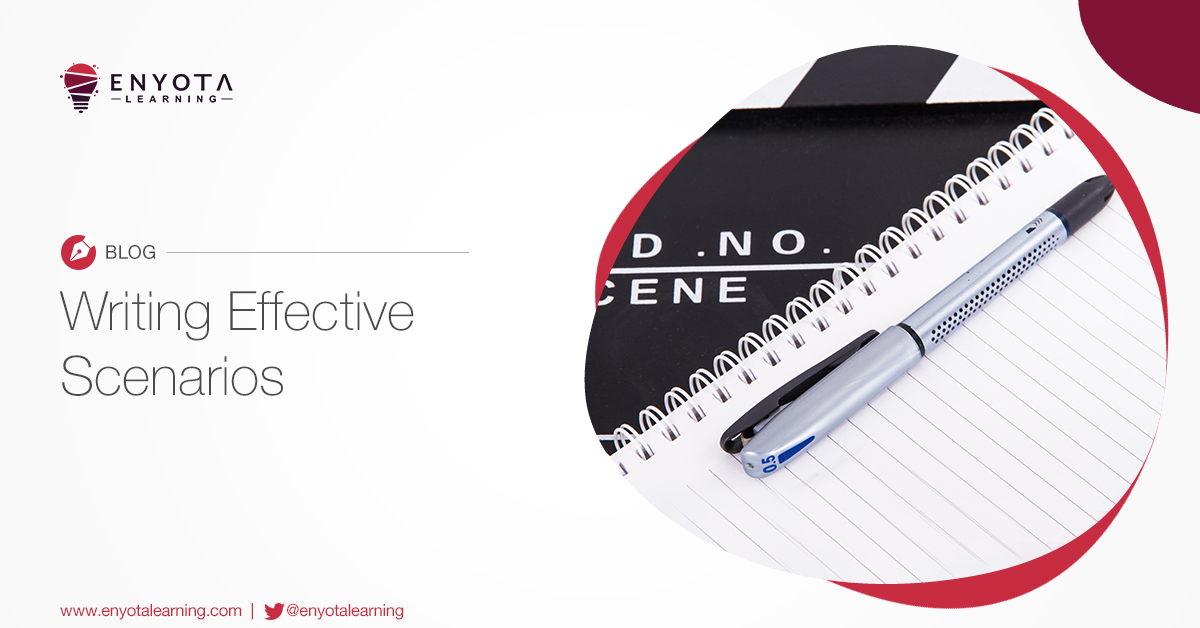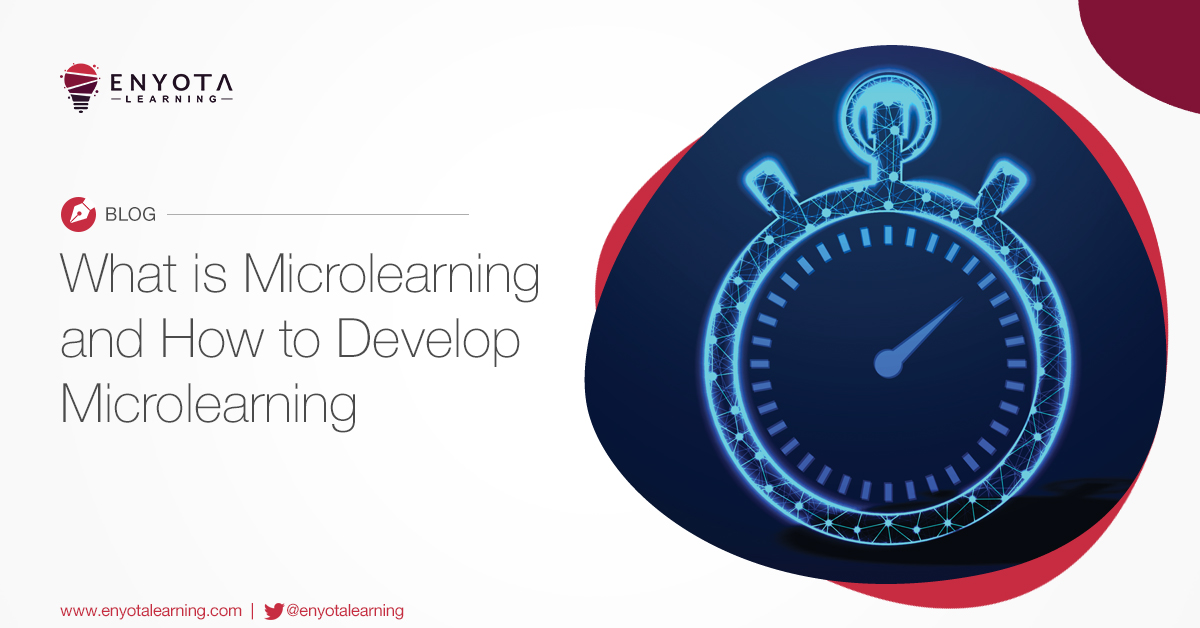
What this article covers:
-
Why scenarios
-
How to write effective scenarios
-
Our services in the field of custom eLearning development enabled by scenarios
eLearning is a fast evolving space, learners and technology, both are reinventing themselves as we progress. It is here that many learning and development professionals and instructional designers ask two important questions – How Do We Make eLearning More Engaging and How Doe We Keep Our Learners in a Responsive State?
Yes, interactive courses, animated explainers videos, gamification, and the many other types of ‘engaging eLearning technologies’ definitely work. However, their engagement rates can further be increased using ‘scenario recreation techniques.’
Scenario recreation is the process by which learning experts recreate real life events in a virtual world. Learners are then immersed into these virtual environments. Here, learners are expected to act logically and address the scenario using the best possible solutions. Scenario-based training allows learners to make mistakes in a safe space. While, also allowing learners to take decisions based on what they deem as an apt solution. And in order to create an engaging, thought provoking, and stunning scenario-based training, it is important for learning experts to first write down the script. This script writing process is what we call ‘writing effective scenarios.’
M. David Merrill, a Professor in the Department of Instructional Technology at Utah State University, states that Learning is promoted when learners are engaged in solving real-world problems. And scenario writing is all about creating real world events for people to re-envision.
David Merrill also put together five principles. These principles allows learning experts to design training that is problem-centered. Since most training concentrates primarily on the ‘demonstration phase,’ the training usually misses that mark for most learners. Such training is unable to ignite a need to learn and develop. And so, here is where scenarios come in.
Why Scenarios?
A scenario works just like those stories you read. Instead of teaching through instructions, a scenario helps learners visualize situations involving characters playing specific roles. Here the learner gets to make certain decisions based on the situation, leading to positive or negative consequences. This nudges them to not only think, but react to the course they are taking, and get more involved.
Now That You Understood the Power of Scenarios, Let’s Get Started!
Scenarios can be tough to conjure up. Writing a scenario requires both good imagination and facts about the subject. Having a good grasp of the subject is very important. Or else, a good imagination with no subject matter expertise will result in nothing. This requires you to have a good grasp on the content, along with good subject matter expertise. It is here that you put together the raw material needed to create a convincing tale.
Starting Point
Let’s take an example of writing a script for a course covering ‘professional etiquettes and interactions at the workplace’. We need to come up with a scenario that involves a problematic situation with an irresponsible colleague. The agenda is to train employees on how to properly manage situations.
Here are the points we need to keep in mind while we write such a scenario:
-
What is the objective of the scenario?
-
Will the scenario come in the beginning of the course or later in the course? Knowing whether learners have covered the topic or they are getting introduced to it through the scenario will help in writing it with the correct objective.
-
Where will the events take place? How will you set the scene up?
-
Who are the characters, including the problem creator, the victim and the one giving the solution (maybe the boss or a colleague), etc.? Will one character play one or multiple roles?
-
Will the scenario end with a negative note leaving the learner to ponder over the right course of action, or will it have a positive end with the solution in it?
-
Will the scenario have questions or not? If yes, will they come after the scenario finishes, or will they come in between the scenario?
-
Will the scenario branch into another scenario depending on the learner’s feedback?
-
Which voice would best suit it—first person versus third person?
Scenario Breakup
Once these basic points are covered and the course of action is set, we can then begin to write the scenario:

Single and Continuing Scenarios
Once all the necessary information is collected and the objective for writing the scenario is clear, we can move on. Most often, a scenario unveils after certain touchpoints have been covered. This is to prepare the learners and to put what they’ve learned to test. In the case of multiple scenarios where scenarios are different with multiple characters and situations, it important for the scenarios to progress in continuation, covering all the varying content, but with consistent characters that you need to build on.
In a continuing scenario, the learner starts to relate with the characters better and grows with them through each scenario and question.
Going Beyond the SME
There may be times when your SME may not provide all the answers to your questions. Or they may be unavailable. In such cases, it is important to be able to search the Internet for answers to fill in the gaps, if the content allows it. This is possible when information is not client or company specific.
For example, if certain rules and regulations are spoken about which applies to a country, one can refer to the internet to read more about the country. This information should be sourced from dependable sources and should not alter the content in any way. Whatever may be the case, the scenario requires a validation by your SME.
Completion
Once you are done writing the scenario, it is important to review it to look for loopholes or gaps that you might have missed in your train of thought. Reach out to your SME with any last questions before they review it. You must make sure that the content comes across correctly and the scenario is convincing and realistic, thus achieving the required objective. Scenarios have great retention value, and hence help in better performance in assessments.
Every writer has a signature style of writing and narrating. However, it is important to be flexible in order to write with the target audience in mind—their age, backgrounds, and the subject. We should not under or over-estimate their sensibility, and should try and attain their perspective to be able to write better.
There are many books and articles on how to write effective scenarios and also on skills to understand people who read what you write. Enhancing such skills will help you write accurate scenarios and positively affect learner performance by keeping them engaged and responsive, contributing towards the success of the course!
We are experts are framing scenarios, tailor made to your organization and your training needs. Our expert instructional designers and eLearning experts build these scenarios based on the training content provided by you. Such content resonates best with your learners and delivers high ROI as compared to ready-made courses. Contact us here or write to us at contact@enyotalearning.com to know more about our services.








